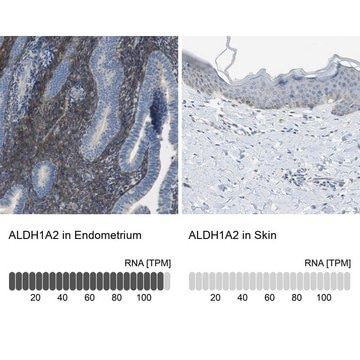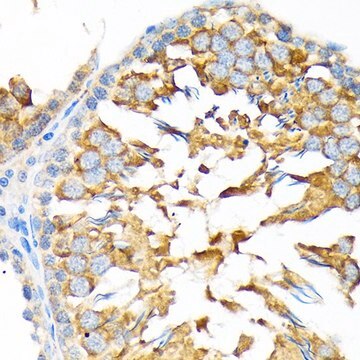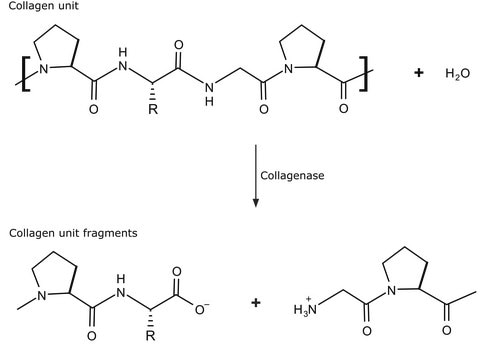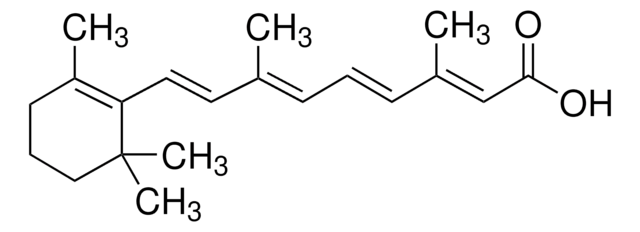ABN420
Anti-RalDH2 (ALDH1A2)
from rabbit, purified by affinity chromatography
Synonym(s):
Retinal dehydrogenase 2, Aldehyde dehydrogenase family 1 member A2, RALDH 2, RalDH2, RALDH(II), Retinaldehyde-specific dehydrogenase type 2
About This Item
Recommended Products
biological source
rabbit
Quality Level
antibody form
affinity isolated antibody
antibody product type
primary antibodies
clone
polyclonal
purified by
affinity chromatography
species reactivity
rat, human, mouse
species reactivity (predicted by homology)
canine (based on 100% sequence homology)
technique(s)
immunofluorescence: suitable
immunohistochemistry: suitable (paraffin)
western blot: suitable
NCBI accession no.
UniProt accession no.
shipped in
ambient
target post-translational modification
unmodified
Gene Information
human ... ALDH1A2(8854)
mouse ... Aldh1A2(19378)
General description
Specificity
Immunogen
Application
Immunofluorescence Analysis: A 1:300 dilution from a representative lot immunostained the developing eye in paraffin-embedded embryonic E15 Sprague Dawley (SD) rat head sections by fluorescent immunohistochemistry (Courtesy of Anna Ashton, University of Aberdeen).
Western Blotting Analysis: A 1:3,000 dilution from a representative lot detected RalDH2 in 50 µg of new born (postnatal P0) Sprague Dawley (SD) rat whole eye tissue lysate, but not in adult SD rat brain lateral cortex and pons tissue lysates (Courtesy of Anna Ashton, University of Aberdeen).
Neuroscience
Quality
Immunohistochemistry Analysis: A 1:250 dilution of this antibody detected RalDH2 in mouse retina tissue section.
Target description
Physical form
Storage and Stability
Other Notes
Disclaimer
Not finding the right product?
Try our Product Selector Tool.
wgk_germany
WGK 1
Certificates of Analysis (COA)
Search for Certificates of Analysis (COA) by entering the products Lot/Batch Number. Lot and Batch Numbers can be found on a product’s label following the words ‘Lot’ or ‘Batch’.
Already Own This Product?
Find documentation for the products that you have recently purchased in the Document Library.
Our team of scientists has experience in all areas of research including Life Science, Material Science, Chemical Synthesis, Chromatography, Analytical and many others.
Contact Technical Service






